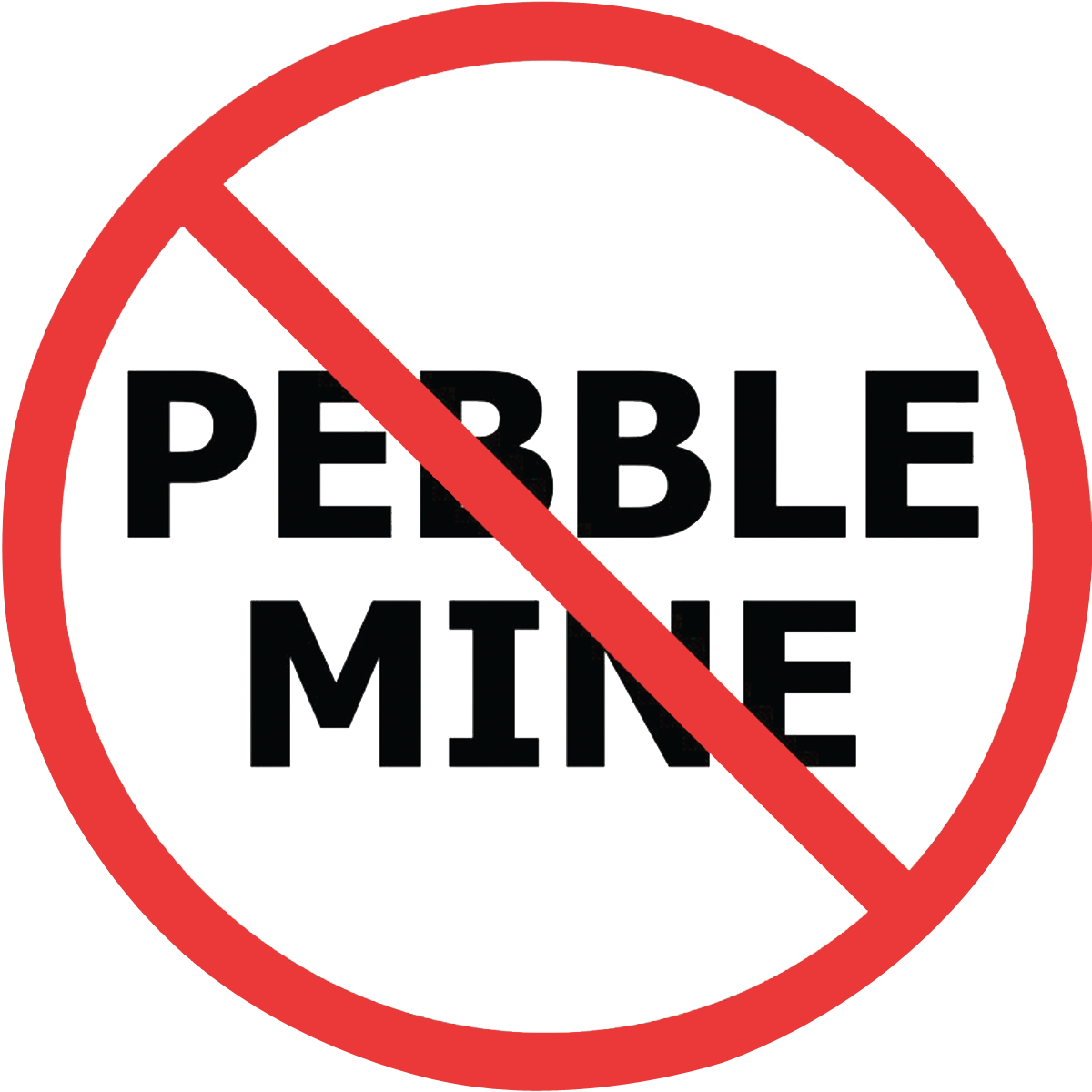Yep! It's true. And we hear this talking point from opposition all the time. Usually, when we refer to Bristol Bay, we mean the region, not the actual Bay itself.
However, Pebble is proposed 100 miles away from the Bay at the headwaters of two of the major rivers that flow into the Bay. The headwaters are a CRITICAL area for the health of the Bay's salmon runs, which is why a massive, toxic mine in that location is so problematic.
Reporter Paul Greenberg explains this well:
“As they charge into the Kvichak and Nushagak rivers and fan out across myriad tributaries, the sockeye and four other species of Pacific salmon are pursued by commercial and sport fisheries valued at over half a billion dollars. When they reach the region’s clear, wild headwaters, those millions of salmon spawn and produce billions of offspring that then find their way down into Iliamna, Alaska’s largest lake. Then the fish head out toward the Bering Sea, get big and fat on omega-3-rich krill, and in three more years return to their headwaters to begin the cycle anew. ”
There's a lot of science that have gone into our understanding of how important the headwaters area - right where Pebble is proposed - to Bristol Bay's salmon. You can take our word for it, or deep dive into the science, or just read on for a summary.
In short, salmon require diverse habitats to complete their complex lifecycles, including spawning, incubation, rearing and migration, this includes many of the tiny headwaters streams and tributaries that dot the upper reaches of the Bristol Bay region.
Problems with Salmon in the Lower 48
Fish habitat has diminished in quantity and quality and as a result, support fewer salmon. Salmon waters and habitats have also been co-opted for uses other than salmon production. Decline of salmon populations has tracked the extent and intensity of human development: mining, agriculture, urbanization, roads, dams, pollution, overfishing and forestry all being contributing factors.
Bristol Bay is unique.
In sharp contrast to salmon declines elsewhere, almost 60 million wild salmon returned to Bristol Bay, Alaska in 2017. Remember those contributing factors to salmon decline from above? None of those are present at Bristol Bay's headwaters.
Additionally, Bristol Bay salmon are in good shape due to greater population diversity - known as the portfolio effect - due to intact habitat (so far) and no hatcheries, which promote a more homogenous stock. One way to think of this is through financial understanding: "Anyone who put all his money on the 'hot' stock, whether it was Enron or Florida real estate, has learned that lesson."
And it shows: Commercial fishers have harvested five species of Pacific salmon from Bristol Bay for around 130 years. Bristol Bay is one of the most valuable commercial fisheries in the U.S. and is one of the few certified as sustainable. Bristol Bay also supports a thriving sport fish industry attracting thousands of fishers who generally spend over 90 thousand angler days and millions of dollars to catch wild salmon, trout and char from pristine Bristol Bay rivers. Noncommercial fishing figures prominently in Bristol Bay communities. Athabaskan, Aleut, and Yup’ik peoples annually harvest over 100 thousand salmon, which they dry, smoke, pickle, salt, can and store for winter sustenance, as they have for thousands of years.
Why?
Bristol Bay contains THOUSANDS of healthy headwater streams from which all major salmon rivers originate. These small streams account for the majority of essential salmon and non-salmon rearing, spawning and incubation habitat.
Conservation of the world’s largest, most valuable, sustainable, wild sockeye salmon fisheries in Bristol Bay depends, in part, on conserving the diverse habitats essential to fish survival and reproduction... over 100 miles from the Bay.
header image by Ben Knight


